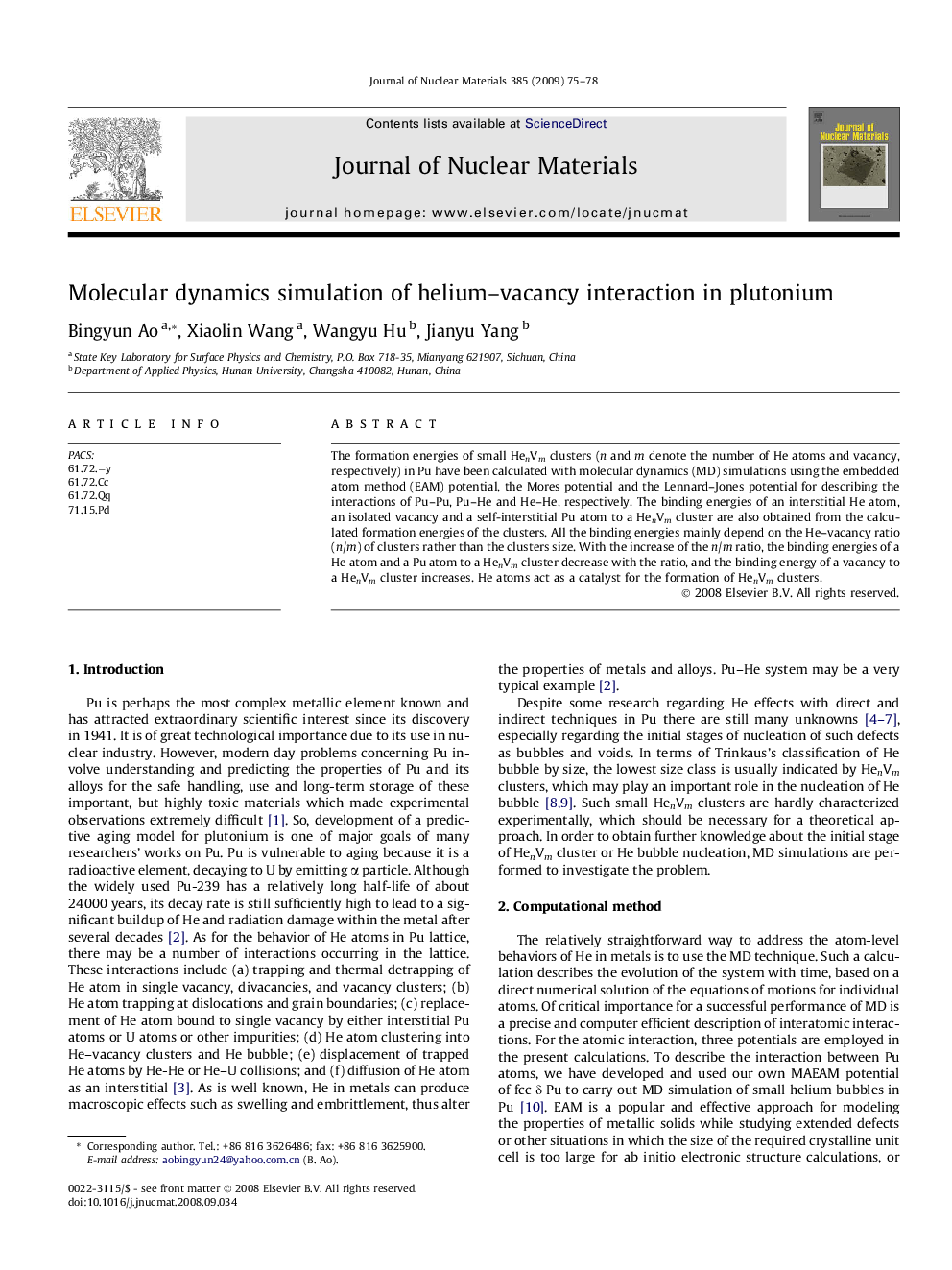| Article ID | Journal | Published Year | Pages | File Type |
|---|---|---|---|---|
| 1568253 | Journal of Nuclear Materials | 2009 | 4 Pages |
The formation energies of small HenVm clusters (n and m denote the number of He atoms and vacancy, respectively) in Pu have been calculated with molecular dynamics (MD) simulations using the embedded atom method (EAM) potential, the Mores potential and the Lennard–Jones potential for describing the interactions of Pu–Pu, Pu–He and He–He, respectively. The binding energies of an interstitial He atom, an isolated vacancy and a self-interstitial Pu atom to a HenVm cluster are also obtained from the calculated formation energies of the clusters. All the binding energies mainly depend on the He–vacancy ratio (n/m) of clusters rather than the clusters size. With the increase of the n/m ratio, the binding energies of a He atom and a Pu atom to a HenVm cluster decrease with the ratio, and the binding energy of a vacancy to a HenVm cluster increases. He atoms act as a catalyst for the formation of HenVm clusters.
